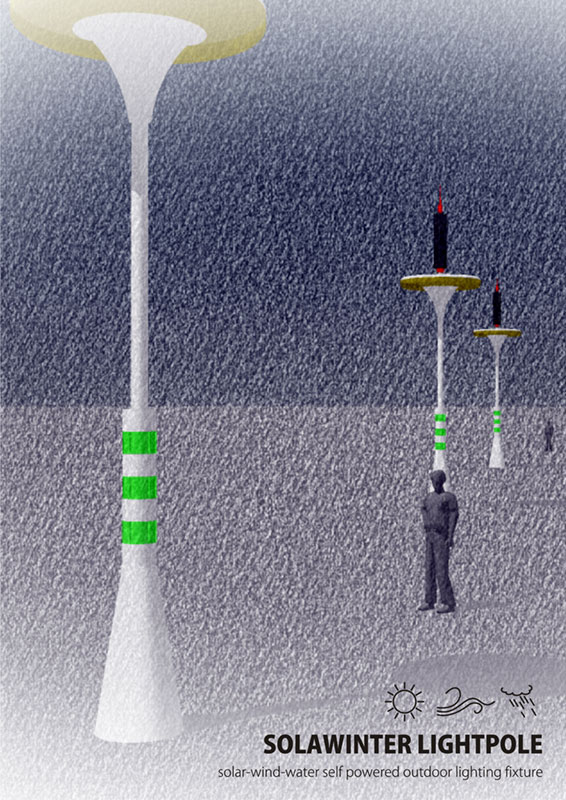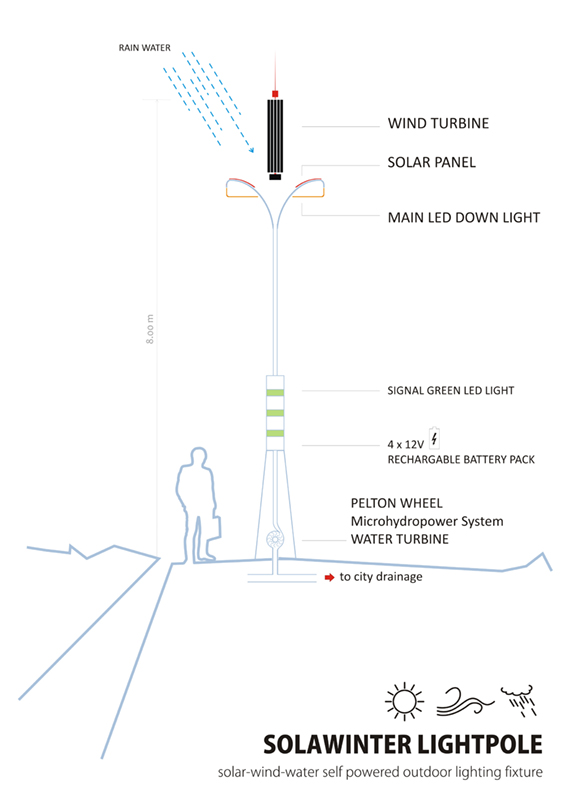
solawinter by damang sarumpaet from indonesia
designer's own words:
Public area illumination is now become an issue, as they consume a huge amount of power.
Solar powered, wind powered, or both in combination, are the most offered solution.
But what if, the sun doesn't shine enough in cloudy wheater, and what if the blow of the wind isn't strong enough to hit the wind turbine...... and what if it's rainy season, and the sun only shines less than 4 hours a day?
The idea is to take advantage to the huge amount of rain water during rainy season in exchange of solar and wind, to become a source of public lights power using the Pelton Wheel Microhydropower System (one of the most efficient types of water turbine)
Instead of harvesting rain drops impacts (like in many researches), it harvests rain water in a receptacle cone and then drain the water 7.5 meters down to a jet sprayer device to produce a certain value of water speed. The 7.5 meters height should be providing enough gravity to push water through a jet sprayer. The jet sprayer sprays the water in a constant speed to turn a Pelton Wheel water turbine which is possible to produce energy.
---------------------------------------------
The Pelton wheel is among the most efficient types of water turbines. It was invented by Lester Allan Pelton (1829-1908) in the 1870s, and is an impulse machine, meaning that it uses the principle of Newton's second law to extract energy from a jet of fluid. Although the one-piece cast impulse water turbine was invented by Samuel Knight in Sutter Creek, in the California Mother Lode gold mining region,[1] Pelton modified this invention to create his more efficient design. Knight Foundry is the last water-powered foundry known to exist in the United States and is still operated using Knight impulse turbines, used to extract power from high heads and low discharge water flows (WIKIPEDIA)
solawinter
 solawinter idea
solawinter idea